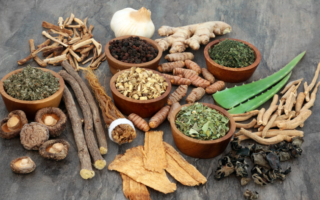From just reading this heading you might be asking yourself what is oxidation and why do I need to know about it? Oxidation is a normal process or reaction that takes place in the body and is needed to produce energy (ATP) from the electrons lost from the food molecules that we eat.
What is ATP?
ATP or adenosine triphosphate is responsible for many bodily functions including metabolism, building bones, repairing tissues, muscle movement and other vital processes.
What is oxidation?
Oxidation and reduction are known as redox reactions, basically oxidation involves the loss of electrons while reduction gains electrons; these two reactions work together to keep electrons balanced. Balanced electrons are important to keep free radicals balanced within the body so that they can help fight off pathogens and avoid oxidative stress. Oxidative stress occurs when there is an imbalance between antioxidants and free radicals (reactive oxygen species) turning the free radicals unstable, resulting in damage to DNA, proteins and fatty tissue in the body. Therefore oxidation is extremely important in protecting against oxidative stress and keeping the body healthy and producing energy (Dunn & Grider, 2022).
Oxidative damage to cell membrane lipids and proteins is commonly caused from reactive oxygen species. Abnormal stimulation to the inside and outside of the body and metabolic processes such as chronic diseases increase the production of reactive oxygen species and free radicals.
Some consequences from the damage of oxidative stress in the body can include the onset of diabetes, atherosclerosis, inflammatory conditions, high blood pressure, heart disease, neurodegenerative diseases and cancer. In order to look after your health, it is imperative to maximise your body’s oxidation reactions so that oxidative stress can be minimised (Pizzino et al., 2017).
Are antioxidants and oxidation related?
It’s not a coincidence that antioxidant and oxidation are similar words, they work together or rather against each other. Basically, an antioxidant is a molecule that can be created from factors such as nutrients and exercise and has the capability to prevent or decrease other molecules oxidising (AKA oxidative stress) and creating free radicals (Lobo et al., 2010).
Some ways to reduce oxidative stress include:
- Consume high amounts of antioxidants from foods such as berries, citrus fruits, leafy greens, vegetables, fish, nuts and garlic. Vitamin C and vitamin E supplements are also great ways to increase antioxidants in the body.
- Regular exercise has been shown to increase antioxidants and oxidation throughout the body as well as decreasing the damage caused by oxidative stress. It is recommended to do 30 minutes of moderate exercise 5 days a week.
- Avoid smoking and high alcohol intake as both these contribute to an overflow of free radicals.
- Avoid overeating, studies have shown that consuming too much food and constantly eating can leave the body in a state of oxidative stress compared to eating moderate amounts of food at appropriately spaced intervals.
- Ginseng is a natural antioxidant that when taken regularly can exhibit antioxidant effects and not only reduce free radicals but prevent the chronic diseases that contribute to the rise in reactive oxygen species (Park et al., 2021).
What are the benefits of reducing oxidative damage?
Anti-ageing effects, longevity of life, greater energy, body function, metabolism and a reduced risk of chronic conditions are just some of the benefits associated with increasing antioxidants and reducing oxidative stress.
Oxidation is the winning sensation
Between gaining more energy, preventing chronic disease and reducing oxidative damage; ensuring your body has ability to balance electrons is a no brainer. By choosing just one or two of these small changes to increase your daily antioxidants you are giving your body permission to be its best and healthiest self. Don’t hold your breath on this one, make a change today to embrace oxidation in your body!
References
Dunn, J. Grider, M. (2022). Physiology, Adenosine Triphosphate, National Library of Medicine. Accessed on 13/09/22, <https://www.ncbi.nlm.nih.gov/books/NBK553175/>
Lobo, V., Patil, A., Phatak, A., & Chandra, N. (2010). Free radicals, antioxidants and functional foods: Impact on human health. Pharmacognosy reviews, 4(8), 118–126. https://doi.org/10.4103/0973-7847.70902
Park, S. K., Hyun, S. H., In, G., Park, C. K., Kwak, Y. S., Jang, Y. J., Kim, B., Kim, J. H., & Han, C. K. (2021). The antioxidant activities of Korean Red Ginseng (Panax ginseng) and ginsenosides: A systemic review through in vivo and clinical trials. Journal of ginseng research, 45(1), 41–47. https://doi.org/10.1016/j.jgr.2020.09.006]
Pizzino, G., Irrera, N., Cucinotta, M., Pallio, G., Mannino, F., Arcoraci, V., Squadrito, F., Altavilla, D., & Bitto, A. (2017). Oxidative Stress: Harms and Benefits for Human Health. Oxidative medicine and cellular longevity, 2017, 8416763. https://doi.org/10.1155/2017/8416763




